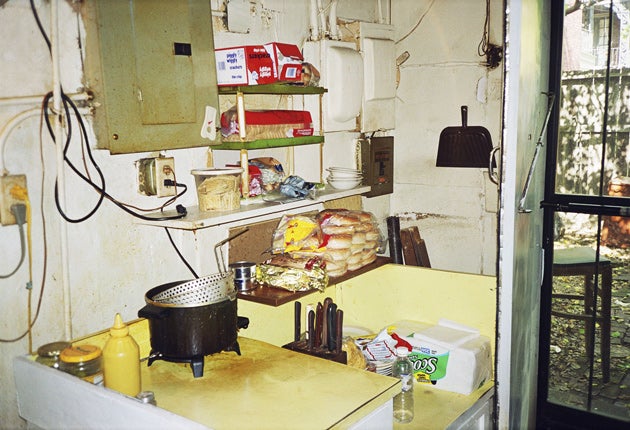William Eggleston 21st Century, Victoria Miro Gallery, London
Another kind of American beauty

Your support helps us to tell the story
From reproductive rights to climate change to Big Tech, The Independent is on the ground when the story is developing. Whether it's investigating the financials of Elon Musk's pro-Trump PAC or producing our latest documentary, 'The A Word', which shines a light on the American women fighting for reproductive rights, we know how important it is to parse out the facts from the messaging.
At such a critical moment in US history, we need reporters on the ground. Your donation allows us to keep sending journalists to speak to both sides of the story.
The Independent is trusted by Americans across the entire political spectrum. And unlike many other quality news outlets, we choose not to lock Americans out of our reporting and analysis with paywalls. We believe quality journalism should be available to everyone, paid for by those who can afford it.
Your support makes all the difference.William Eggleston's photographs contain some of the most luminescent colour that you can hope to lay your eyes on in a printed picture. What's even more surprising is that Eggleston finds such colour in dumpsters, bathrooms and alleyways.
Eggleston, himself from Memphis, Tennessee, became known as a chronicler of America, and the South in particular, in photographs often peppered with the everyday and the discarded – empty glass coke bottles gleaming green white and gold on a sunny windowsill, gigantic advertising hoardings in empty fields and ubiquitous lonely gas stations. Eggleston bestows on all of these a commonplace, almost aching, beauty. This exhibition of recent works, entitled 21st Century at Victoria Miro Gallery, includes many photographs that are more akin to colour field painting or collage than they are to documentary, peppered with wry allusions.
The exhibition begins, for example, with an image of a room in a sign factory in St Petersburg, Russia. Blank white signs, like the kind painted with house names, wait expectantly on a wooden shelf for words and pictures, while, in contrast, the room is decorated with posters (some framed) of naked pin-up girls, oddly uniform in their shades of oiled, orangey skin. The picture coralls together images of complete visibility and complete invisibility, and almost nothing in between. Close by in another image, a garish Memphis kitchen is full of a yellow shade that squawks on packaging and mustard bottles, contrasted with an equally artificial red box for Piggly Wiggly crackers. Glimpsing a garden through the door to the left, dappled in sunlight and refreshingly calm shades of green, we see another world.
Unexpected loveliness is found in an image of a Cuban bathroom taken in 2007. Pink curtains faded by the powerful sunlight into tones of fuchsia, pistachio and gold billow in the breeze, giving the room a rich rosy glow. The scuzzy paint and white tiles are transformed into a rich, almost magical shade. Similarly otherworldly is a picture of the inside of a freezer, where ice has formed into long clouds of aquamarine and magnolia crystals on the ridges at the back. Stored below are bags of Party Ice, uniform in comparison, in bags of red and blue packaging. Equally charmed with light is a spoon gleaming on a windowsill of woodgrain so rich that it looks like pheasants feathers.
The images also reach beyond the immediate visual pleasures of colour and light. A repeated motif of Eggleston's are bright dresses or hair screened behind milky, frosted glass or shop windows, hinting at desire, at the intangible. While the photographer does manage to catch a fleeting moment of everyday transcendence, each discrete moment of reality or beauty is just that – a snatched fragment. This is strongly felt in a photograph of a discarded scrap of the LA Times lying on the ground, sunbleached so that and the story and the accompanying image – of skyscrapers blooming in China – have faded into the same bluegrass greens and yellows of the grass that it lies in. The colour of the grass and the paper is also the colour of banknotes. All seem to float equally on a kind of breeze here, and all seem destined to fade into memory.
To 27 February ( www.victoria-miro.com )
Join our commenting forum
Join thought-provoking conversations, follow other Independent readers and see their replies
Comments